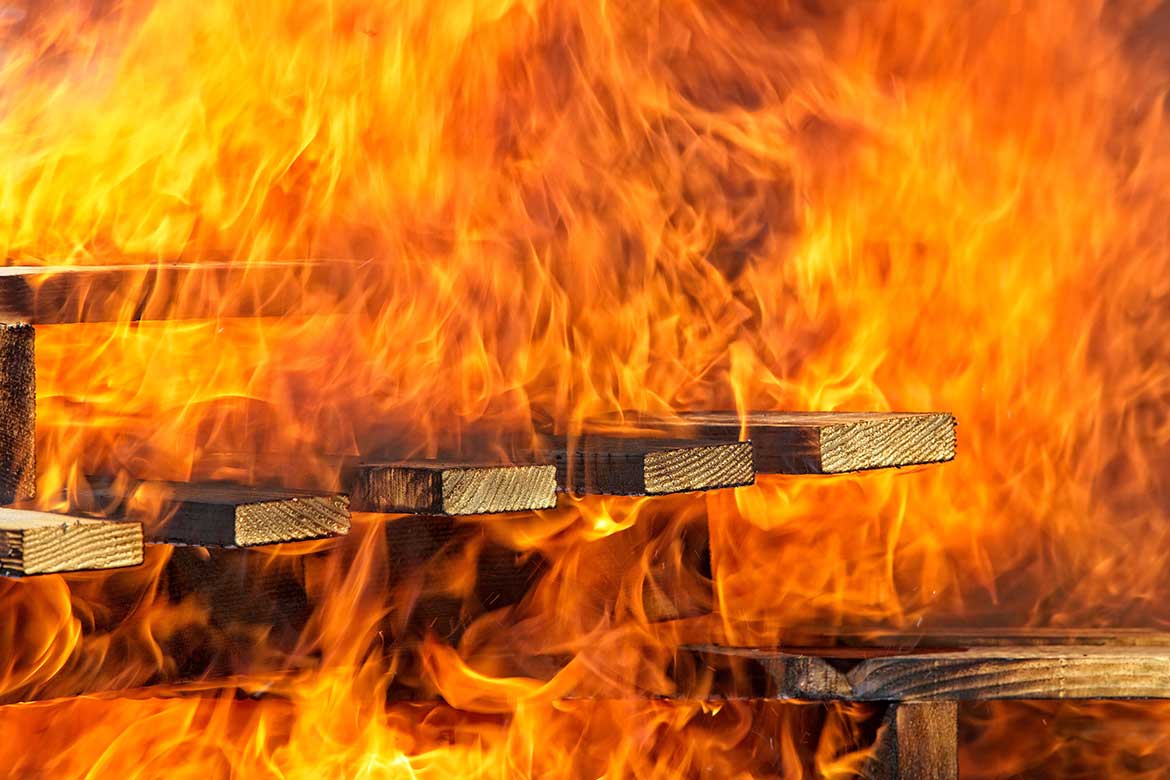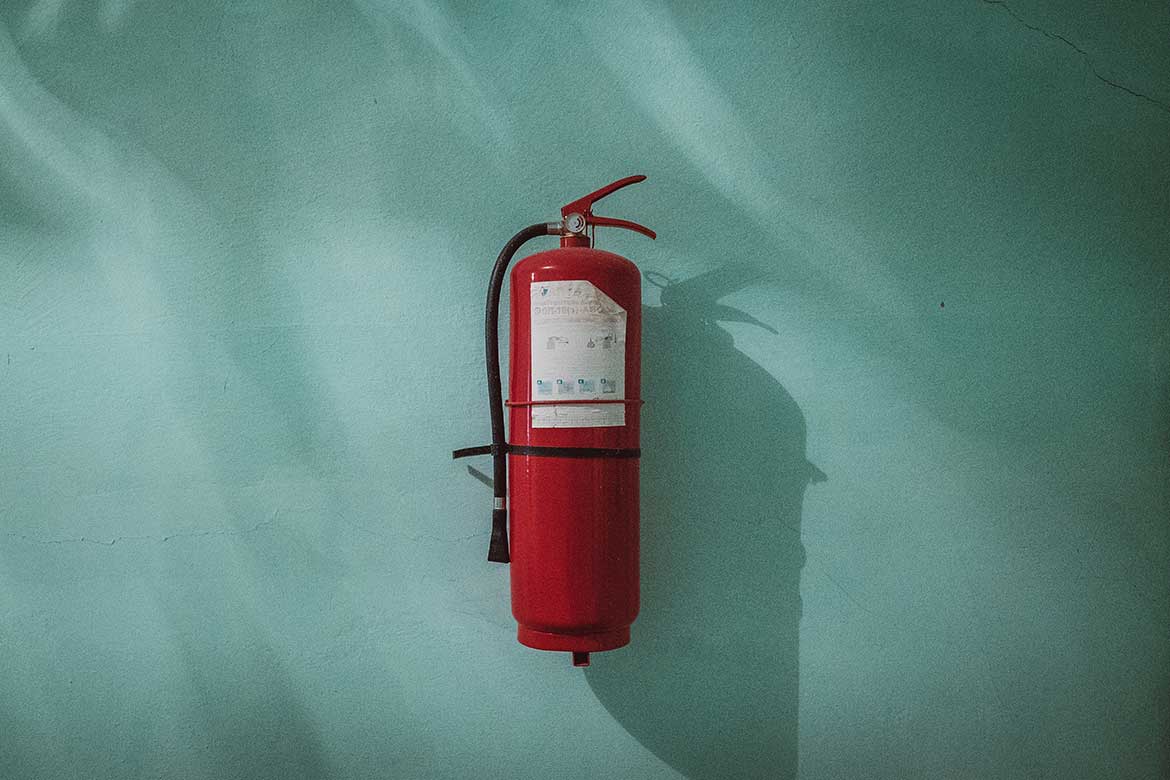20th October, 2022
Why And When You Need Fire Drills
A fire drill is where you and your team practice the action to take in the event of a fire. Fire drills are an important part of fire safety training for your workplace. With regular fire drills, your team should know exactly what to do if there's a fire - and be able to get to a place of safety.
Fire drills are an important part of fire safety training for your workplace. If a fire starts, what should everyone do? You don't want to find out in an actual fire that your fire evacuation plan doesn't work. Or to find out that nobody knows what to do. Or for absolute chaos.
With regular fire drills, your team should know exactly what to do, because they have practised already! And so, in the heat of a real emergency, they can escape to safety on auto-pilot.
What is a fire drill?
A fire drill is a practice run-through of the action you need to take in the event of a fire. If a fire happens, people need to evacuate and get to a place of safety. But do they know how to get out? Do they know where to go?
Every workplace should have a fire evacuation procedure. This is a plan for what to do in the event of a fire. A fire drill is a practice run-through of that plan.
What's the purpose of the fire drill?
If you already have a fire evacuation procedure, and you've told people about it, why do you need a fire drill?
The fire drill has two purposes:
1. You can check everything works
Sounding the alarm. Fire marshals. Fire actions. Shut down procedures. Timings. Roll call.
Does everything work out the way you planned? Can improvements be made? Is there a better way?
2. You can remind everyone what to do
Sure, you might have told your team to read the plan, you might even have given training on it. But were they listening? Did they understand? Do they remember?
If it's just written down, it's probably not going to feel very real - and so it will be quickly forgotten. You wouldn't learn guitar by reading a book, you would learn by playing the instrument. Doing the thing you are learning has more impact, and the same is true for a fire drill.
A fire drill first shows them what to do, get's them to actually do it, and then reminds them what they need to do each time you practice.
What makes a good fire drill?
To get the most out of your drill, treat it like the real deal. Don't do the same thing each time, because fires are unpredictable and can grow quickly. What would you do if an escape route was blocked by fire? What if one of your fire marshalls was off on holiday? What if someone was trapped?
Creating different scenarios each time will make the fire drill more interesting, memorable and an effective learning experience.
Making fire drills realistic gives your team better training and knowledge of what to do should a real fire occur.
Make sure you have a plan in place before doing a drill, and that fire marshals and anyone else with fire responsibilities has been made aware of what's expected of them. The purpose of the drill is to familiarise everyone with what to do and avoid panic.

Are fire drills a legal requirement?
Yes, the requirement for carrying out fire drills is included in the Regulatory Reform (Fire Safety) Order 2005 as safety drills.
(1) The responsible person must—
- establish and, where necessary, give effect to appropriate procedures, including safety drills, to be followed in the event of serious and imminent danger to relevant persons;
Why do we need fire drills at work?
If a fire happens at work, what should you do? It might seem like a silly question, with a simple answer. Get out of the building. But actually, reacting to an emergency like a fire can raise a lot of questions.
- How will you know there is a fire?
- Who will sound the alarm?
- Where will you go?
- What route should you take?
- What if an escape route is blocked?
- Should you avoid any areas?
- Who will make sure everyone gets out?
- Should you try to put out the fire?
- What about visitors?
- Will anybody struggle to get out?
It's much better to answer these questions during a fire drill, rather than in an actual fire when people's lives are at risk. And that's exactly why we need fire drills at work. So that employees and anyone else in the workplace become familiar with what to do in the event of a fire.
It also gives those with fire responsibilities, like employers and fire marshals, the opportunity to check that the evacuation plan works. If better options are identified, the evacuation plan can be updated.
How often should you do fire drills?
When do you need fire drills? Should you carry them out annually, monthly, weekly, every day?! Ok, daily might be taking things a little far. You still need to fit some work into your schedule!
But, as we have already discussed, fire drills are an important part of your fire safety policy. And a legal requirement. So, how often should you do them?
(2) The training referred to in paragraph (1) must—
- include suitable and sufficient instruction and training on the appropriate precautions and actions to be taken by the employee in order to safeguard himself and other relevant persons on the premises;
- be repeated periodically where appropriate;
- be adapted to take account of any new or changed risks to the safety of the employees concerned;
- be provided in a manner appropriate to the risk identified by the risk assessment; and
- take place during working hours.
Fire drills will form part of your fire safety training, which should be repeated periodically.

The law doesn't tell you exactly how often to do a fire drill, it just says periodically. How often you do one should be decided on several factors.
- What's the risk of a fire happening?
- How easy is it to get to a place of safety?
- Has anything changed since the last fire drill?
The best way to decide how often you need a fire drill is to carry out a fire drill. If it's the first one you have done in a while - or your first run-through of a new evacuation procedure - you can see how it goes.
During the fire drill, fire safety checks can be made. Such as:
- Can the fire alarm be heard in all areas of the workplace?
- Did fire marshals know their responsibilities?
- Can the fire escape routes handle the number of people?
- How do people react?
- Does anyone need special assistance?
- Did everyone get out within the expected time?
- Is any extra training required?
These initial fire drills are to establish the evacuation plan and make sure everyone knows what to do. Don't worry if it doesn't all go to plan. That's the purpose of a fire drill. Practice makes perfect. You can make any necessary adjustments, and try again. Better to do it now during practice than in a real fire.
How many fire drills should be held annually?
At least once a year is an absolute minimum, but for most workplaces, you should be doing more.
Initially, you might need to start with more frequent drills, for example monthly. Once the fire evacuation procedure has been established and practised, the frequency of fire drills could be reduced.

When your team is up to speed, it might be perfectly fine for you to reduce your fire drills to once a year - but we would recommend twice a year for most low-risk workplaces, and more often in higher-risk workplaces.
However, it's important to be aware of changes such as turnover of staff, layout and new hazards that may impact the evacuation plan. If changes are made, it would be worth considering scheduling a fire drill sooner, to make sure everyone is aware of the updated arrangements.
What time of day should fire drills be carried out?
Fire drills can be carried out at any time of the day, and should sometimes be unscheduled or unannounced, to add to the authenticity of the practice.
There's one rule though - fire drills should take place within work hours.
Go beyond fire drills. Here are 10 weekly fire safety procedures, to keep your workplace safe from fire.
This article was written by Emma at HASpod. Emma has over 10 years experience in health and safety and BSc (Hons) Construction Management. She is NEBOSH qualified and Tech IOSH.
Fire Safety Course
Take our fire safety elearning course and get your certificate today.
Fire Safety CourseRecent posts like this...

The 6 Types And Classes Of Fire (And How To Put Them Out)
Not every fire is the same. Different types of fire have different hazards and risks. Using the wrong kind of fire extinguisher could do more harm than good. There are six classes of fire, and each should be attacked differently to put them out safely.
Read Post
The 5 Types And Colours Of Fire Extinguishers And Their Uses
Fire extinguishers should tell you what type they are, and what kind of fire you can use them on. But in an emergency, will you have the time to check? Knowing fire extinguisher types is important, so you can act fast. Let's find out about the common types and colours you might need to use.
Read Post
How Often Fire Extinguishers Need Checks, Services And Inspections
Fire extinguishers are an important part of your fire protection measures. While having them in place is a great start, they need to be maintained. Fire extinguishers must be checked, serviced and inspected regularly to keep them ready for action.
Read Post